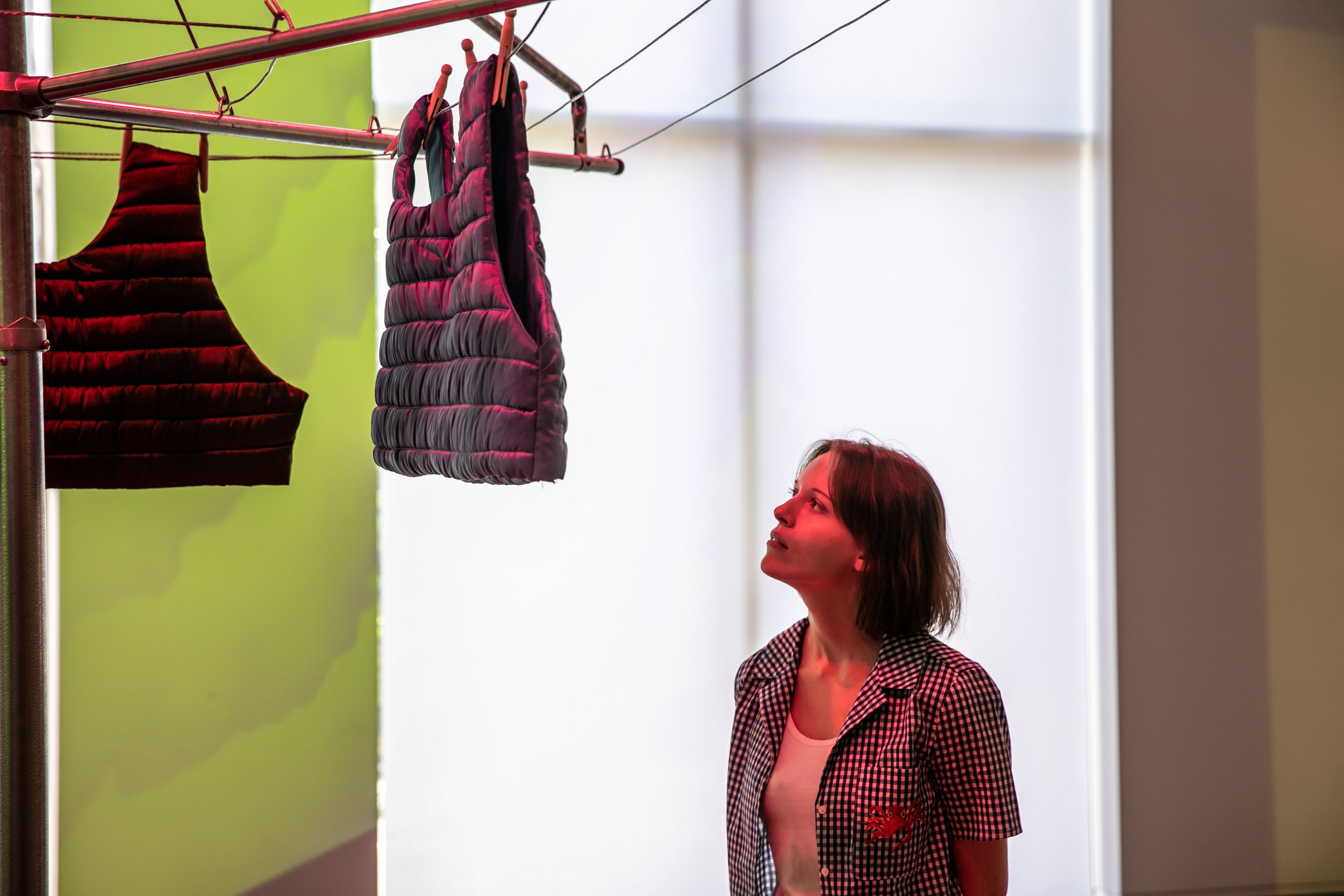Meet Science Gallery Mediator Ashlen Campbell
Ashlen Campbell has been part of our Mediator Program, proudly supported by BASF, since 2022. We sat down with Ashlen to chat about her enriching role as Mediator as she balances finishing her PhD in Ecology.
“Our job is as much about listening as it is about talking, so for us it’s also a priority to make sure the visitor feels heard, and that their voice is as important in that space as anyone else’s.”
When Ashlen Campbell commenced at Science Gallery Melbourne, she was already volunteering on a pollinator research and roadside habitat restoration project, as well as creating educational natural history content for social media – making her a huge asset for our 2022 SWARM exhibition. Ashlen graduated from the University of Melbourne with a Bachelor of Science in 2020, after which she continued to pursue her passion for research and science communication in environmental consulting and as a freelance science presenter for Stile Education. Working as a mediator helped Ashlen to continue to build her science communication skills, which led her to opportunities as a freelance science writer for Atlas Obscura and PBS Digital Studios, as well as joining the Victorian Biodiversity Conference Organising Committee, where she is involved in outreach to promote student research on social media and at the conference itself. Ashlen is now a PhD student at Deakin University, studying pollinator ecology.
What is your favourite part of being a Mediator?
Getting the chance to make people feel like they belong in discussions about science, art and experimentation, and I love being able to share my knowledge and the things I’ve learned with others. It’s also great to see someone get excited about science and start sharing what they know with you! Our job is as much about listening as it is about talking, so for us it’s also a priority to make sure the visitor feels heard, and that their voice is as important in that space as anyone else’s. I have been able to meet so many fascinating people, both members of the public and members of the Science Gallery team. It’s great being on shift because not only do I get to share my knowledge of the pieces, but I also learn so much through those discussions in the gallery.
How is being a Mediator different from other jobs in the field?
Other gallery attendant jobs are often focused on invigilating the artwork, preventing visitors from touching or interacting with it rather than facilitating engagement for the audience. While our role also involves making sure the artwork is protected from damage, the main component of being a mediator is to encourage engagement with the pieces and initiate discussions that help visitors to view art and science in new ways.
What skills have you developed during your time in the program?
I have become more skilled at analysing art and drawing connections between art and science that are not immediately obvious – I never considered myself an “art person”, but working as a mediator helped me to really understand just how interconnected science and art really are, and I feel like I have a greater appreciation for both. It also provides a great avenue to meet people in our chosen fields – as an ecologist, I’ve had the chance to meet and get advice from scientists and environmentalists that has really helped to develop my science communication skills.
“It’s important that young people know there’s a place for them in science communication and science itself, as well as in arts and academia. The more people that are invited into these spaces, the more diverse and unique the ideas! ”
Can you share a memorable experience you've had in this role?
I’ve loved working the Friday Night Socials, when we get to discuss pieces with so many people coming through the gallery! It’s so much fun when you start talking about a piece with some visitors, and then others overhear and come over to find out more – before you know it there’s a whole crowd discussion!
What has been your proudest moment as a Mediator and what did you have to overcome to achieve it?
My proudest moment was really a series of moments; in our BREAK THE BINARIES exhibition, I loved Bugs Against The Binary by Lauri Pavlovich, because it was a great framework for discussing prejudice. As I talked about the lives and diverse genders of the invertebrates we had on display over the course of the exhibition, I got to see visitors reframe the way they think of gender in the natural world, AND the way they see animals that they were once afraid of. I was so proud to play a small part in changing someone’s mind like that.
Ashlen looking at Grace in the Garms by Sadé Mica during BREAK THE BINARIES at Science Gallery Melbourne, 2023. Photo: Alan Weedon.
Bugs Against the Binary by Lauri Pavlovich during BREAK THE BINARIES, 2023. Photo: Alan Weedon.
How do you engage with visitors who may have little to no background in science?
I always try to introduce concepts and start discussions with visitors in a way that makes them feel comfortable asking questions – we all know what it’s like to be inexperienced in a subject, so we all know it can be a bit scary asking questions for fear of seeming uninformed. As a mediator, I’ve learned a lot about discussing science in an accessible way that still respects the visitor’s intelligence and engages them.
How do you collaborate with other mediators at Science Gallery Melbourne?
We often use our varied backgrounds in art and science to share unique insights on the exhibitions and pieces. By learning from each other on the job, we can enhance our own delivery, and it becomes so rewarding to help each other develop our communication skills.
Ashlen with team members at the BREAK THE BINARIES exhibition, 2023. Photo: Alan Weedon.
“I hope to help make science and other academic pursuits more accessible to everyone. With the recent increase in misinformation online, I think it’s really important that we create spaces where we can apply and practice our critical thinking skills.”
Ashlen discusses a favourite work in NOT NATURAL, 2024.
BENEFITS AND IMPACTS
Science communication
Inclusivity and access
Art analysis and interpretation
Critical thinking and dialogue
Perspective-shifting through conversation
The Science Gallery Melbourne Mediator program is proudly supported by BASF.





